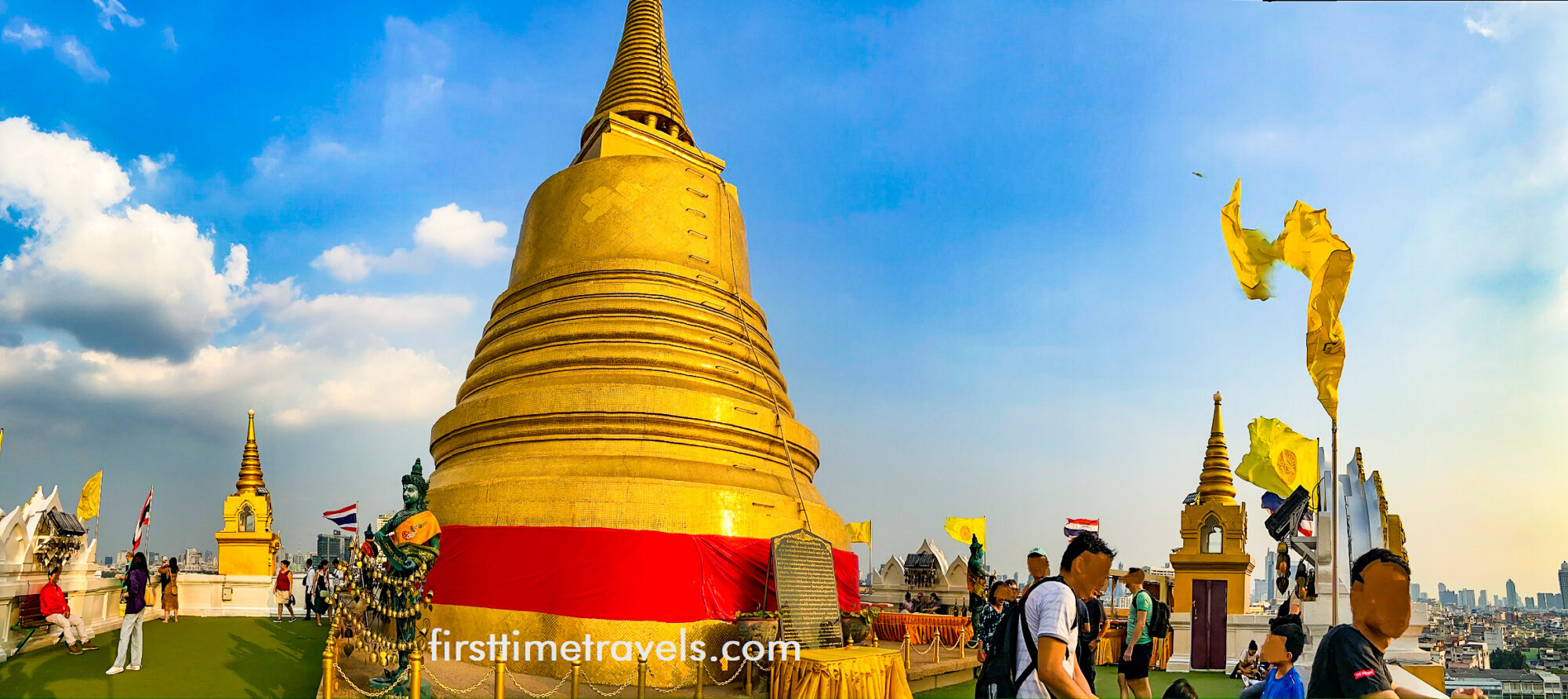Although I have been to Bangkok several times, it was only in 2019 that I have learned of Wat Saket through the Korean travel variety show, Thrifter’s Guide to Luxurious Travels or Salty Tour. The first trip they took for the new season in 2019 was to Thailand and they visited this less touristy temple, Wat Saket, which is the Temple of the Golden Mount. Its official name is Wat Saket Ratcha Wora Maha Wihan but it is more commonly known as Wat Saket. Locals call it Wat Sakae (our driver emphasized that the “t” at the end is not pronounced) but I later found out that it was called Wat Sakae during the Ayutthaya kingdom.


It was only called Wat Saket during the reign of King Rama I of the Chakri dynasty, founder of the Rattanakosin Kingdom of Siam, presently Thailand. During the era of King Rama III, he decided to build a giant chedi within the Wat Saket compound. However, the chedi collapsed while still in the process of being constructed and the plan was abandoned. The structure grew weeds and looked like a natural hill. A smaller chedi was built on top of the hill during the time of King Rama IV, which was finished at the reign of his son, King Rama V. To keep the soil from eroding, concrete walls were added for support. Now, they call it as Phu Khao Thong or the Golden Mount.
The climb to the top of the chedi can be a bit of a challenge but the steps leading to the temple are not steep. Bells and gongs are found on the way and visitors ring them as they make their stop on the way up. Besides, you get to enjoy the view of Bangkok as you go on with your ascent.



Open from 7:30 am to 7:00 pm, Wat Saket can be visited through an entrance fee of THB50 (about USD1.66) and is accessible by car or bus (line 8, 15, 37, 47, 49, Port 37, 49). Visitors can also take the passenger boat at the Phan Fa Lilat Pier via Khlong Saen Saeb, a canal that connects the Chao Phraya River to Prachinburi Province and Chachongsao, or at the Tha Phu Khao Thong via Khlong Phadung Krung Kasem, a canal which was dug as an outer moat for the Rattanakosin Island, the center of the capital which is now Bangkok.
A temple fair is held during Loi Krathong Festival in November where they worship Buddha’s relics for 7 days and 7 nights. The temple is open to the public as they can go up to the mount and pay respect to Buddha’s relics.



On the way down, we took a different route and found some statues of vultures. It is said to be placed there as a reminder of an outbreak during the reign of King Rama II. Wat Saket used to be a place where the dead are cremated and when a cholera outbreak occurred, bodies were brought to Wat Saket. However, they couldn’t cremate all the bodies because they were too many so they left them in the open and vultures devoured the cadavers. For many years, many vultures are seen in Wat Saket as the disease kept spreading.


There are also other smaller chapels at the base of the mount. We exited the West Gate which led to a street full of souvenir shops and a canal. Within walking distance are known Michelin eateries like Raan Jay Fai and Thipsamai Pad Thai. Also located within this area are Loha Prasat, Wat Ratchanatdaram, Mahakan Fort and the statue of King Rama III.

Beautiful 🙂